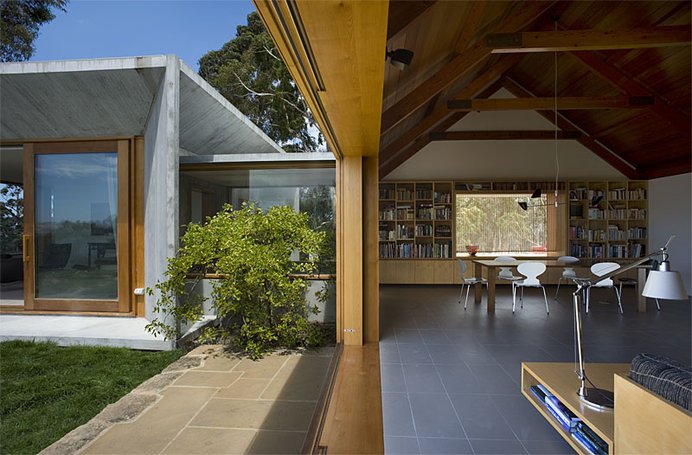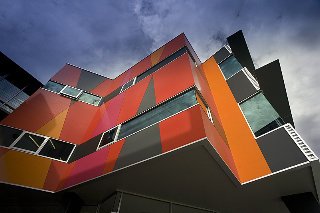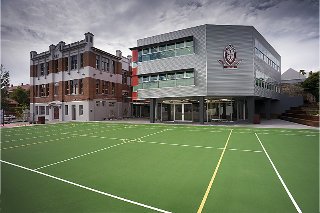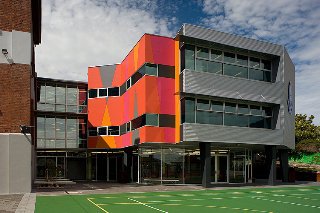Heffernan Button Voss Architects

HBV (Heffernan Button Voss) Architects is a well known, respected and award winning architectural practice which combines the best design skills with experience and a commitment to quality. The practice is well known for innovative design, high quality documentation and the ability to deliver complex projects on time and on budget. HBV Architects reputation has been built across a diverse range of project types including commercial, corporate, multi residential, education, recreational and hospitality based developments.
Driving directions to Heffernan Button Voss Architects on map
Heffernan Button Voss Architects on Google Maps
Projects:




Trial Bay House
Trial Bay, Tasmania, 2010
The project involved complete re-organization of an existing dwelling and the addition of a new living room, verandah, courtyard and garage. Located at Trial Bay, overlooking the D’Entrecasteaux Channel, the ‘Channel Room’ – as it is now known – is like an abstraction of a cinematographer’s camera, whereby the apertures have been adjusted to subject, view, and light. The East Elevation recalls the landscape painter’s cropping device. The new room is projected toward the Channel, in a manner and position that preserves the outlook from the house, and maximises direct sunlight to (and outlook from) both. The new architecture departs from the existing ‘holes in walls’ masonry character by achieving the duality of being extroverted and open to the landscape, yet being solid, strong and robust. Double-glazed, sliding timber windows and doors combine with tiled floors, solar collectors, integral hot water heating, cross ventilation and rainwater-harvesting to achieve an acceptable level of environmental performance (without remote control). An embedded idea is the creation of a pattern of continuous space and circulation, as a metaphor for the landscape itself.




Elizabeth Street Pier
Hobart, 1999
The 1930’s Elizabeth Street Pier is the last remaining major finger wharf in Sullivans Cove. The selected uses were governed by the desire to maintain full public access around the perimeter concourse and to allow the continuity of maritime usage. The main level includes restaurants, serviced apartment entry foyer and function centre. Upper levels contain serviced apartments. The forecourt is a public people square on which various types of entertainment will occur. The existing finish to the forecourt and pier aprons has been retained. The northern and southern promenades, in addition to being pleasant walk areas, have other important ‘people’ uses including cafe type use and new marina access on the northern side, with the southern side providing access to the formal entries to the tenancies and service access to the building and port type activities. Carparking is provided in the immediate vicinity of the pier.




St Michael’s Collegiate Middle School
Hobart, 2009
The refurbishment of an original school building and a 3 storey classroom extension in central Hobart. The existing 1920s school house was redeveloped as the Collegiate Middle School, including years 5, 6, 7 and 8. HBV Architects has created a new facility for Collegiate Middle School, to act as a hub, engaging and connecting the existing buildings with the new facility. Visibility, connectivity and flexibility were the main drivers of the architectural composition. The programme required a doubling of existing floor space, which gave rise to the new classroom wing and conversion of existing accommodation to provide larger, more open, contemporary learning environments to meet current needs. The approach to refurbishment of the existing school building was primarily one of alteration, repair and recycling, including a significant opening-up of new spaces to meet the Schools’ teaching requirements. The foundations of a previously demolished historic house of moderate significance were archaeologically recorded during the construction phase, and as the footings were uncovered, the School used the opportunity for a student history project which also included the collection of artefacts. The plan form of the addition breaks the dominant paradigm of classrooms arranged about corridors, and defines an open learning environment with a democratic disposal of spaces, yet it is strongly connected to the existing heritage classroom elements. In response to the need for contemporary, flexible teaching space, classrooms wrap around a central, divisible general purpose space, enlivening both. Classrooms are also divisible by operable walls for further flexibility within each teaching space. The lower ground floor is defined by the canteen, which enlivens and connects with the existing playground outside, and back to existing circulation routes, stairs and a new lift inside. Unashamedly contemporary, the new wing overtly expresses a new mode of learning, both functionally in terms of the disposition of space, and formally in its architectural and sculptural expression, delivering the Collegiate Middle School as a proud partner in this vibrant urban campus.






